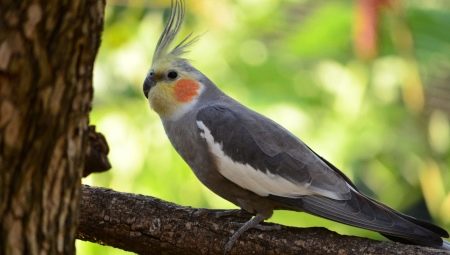Corellas are unusual parrots with bright cheeks and a crest on their heads. Everyone is paying attention to these details of their appearance, and no one is indifferent. But not only the visual appeal should be decisive when acquiring a pet. The main factors of choice are the age of the parrot and its state of health.
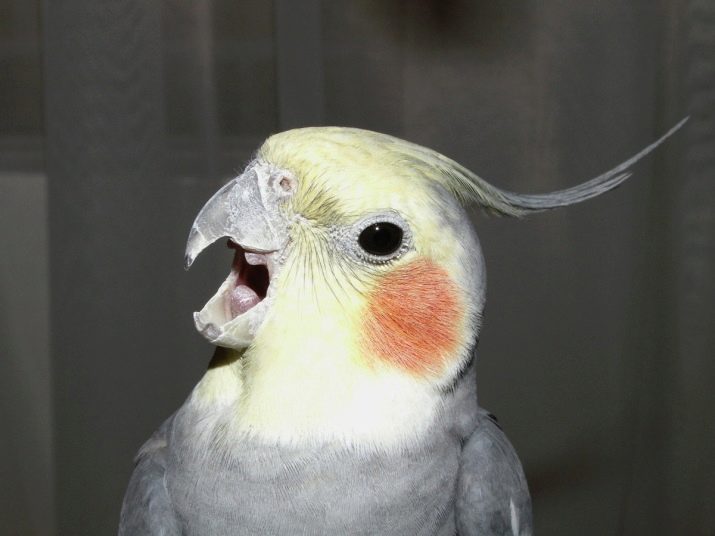
What you need to know when purchasing a Corella
Each future owner wants to know the age of his new pet and also wants him to live with him as much time as possible.
At what age is it best to buy a bird? The most suitable period is age up to 14 weeks (3.5 months). At this moment, they best endure the change of environment and more easily adapt to other conditions before the first molt.

What is the duration of their life, one cannot say for sure - it all depends on the conditions of their detention. The average duration is 15 years, but if they live in decent conditions, in love and care, then the figure may increase to 20 years. And vice versa, if the conditions are bad, then the parrot will live much less accordingly.
Therefore, we must remember that it all depends on you, what conditions you will provide your friend. Of course, Corella is unpretentious in every sense, but do not neglect the basic rules of care and maintenance. The life span can decrease both due to stress and due to illness.
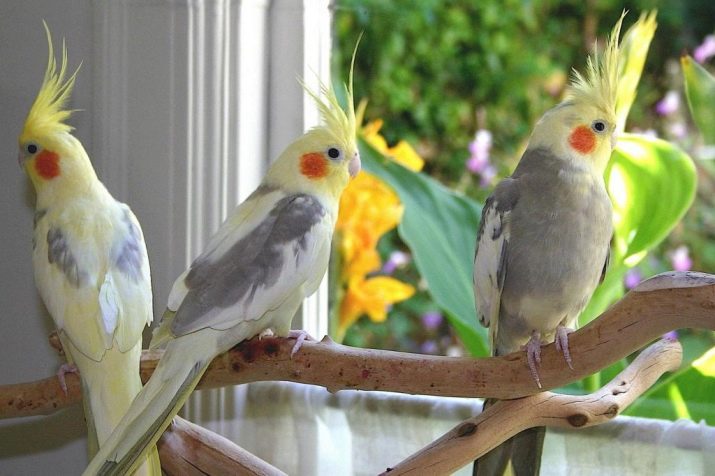
What you should pay attention to when buying, in order to understand what is the age of the chosen Corella parrot:
- head;
- eyes;
- beak;
- paws;
- plumage;
- behavior.
Now we will talk about all the items from the list in order.
Head
The young bird has a small, not fully developed crest on its head. It consists of two or more straight feathers. Unformed feathers look like small feathers that have not yet been fully opened. But adults have already formed, open, long, beautiful crests.
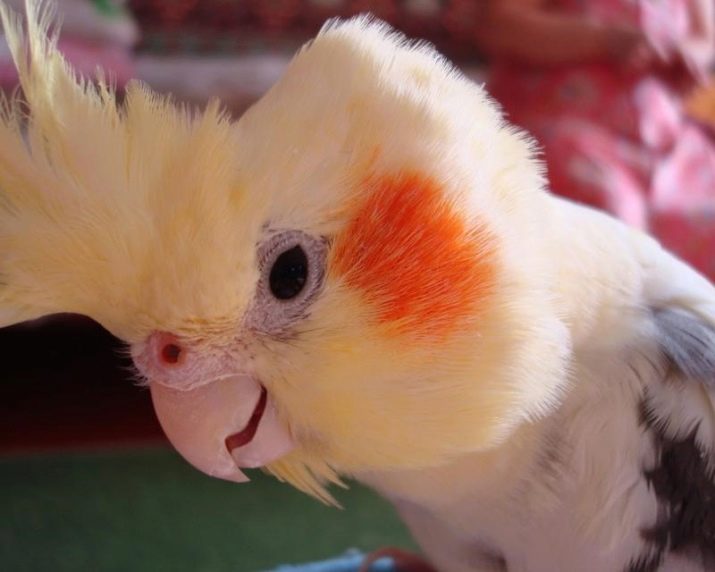
Also, in adults, the ends of the feathers may be slightly bent. And in old birds, a bald spot may be located under a crest.
Eyes
Young representatives have black shiny eyes. With age, they fade, and the iris becomes brown. In very old individuals, the eyes become light brown with a splash of light yellow.
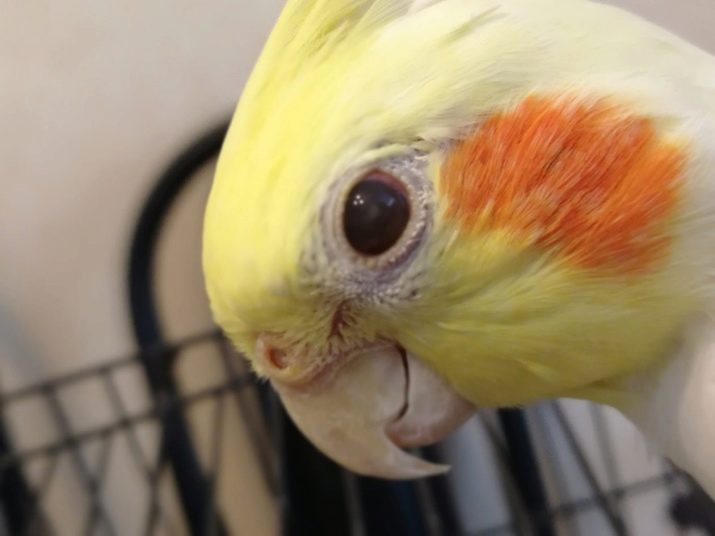
Beak
By the beak you can also determine - an adult parrot or not.
The young beaks are light gray in color, and they are even. There are no mechanical damage or delamination. Also, small parrots have more nostrils than adults. The wax is light gray in color, with a slight pink shine.
The older the parrot becomes, the darker the beak becomes. By old age, it becomes almost black. Also, damage, delamination and layering appear on it. Voskovitsa acquires a wrinkled appearance and gray color.
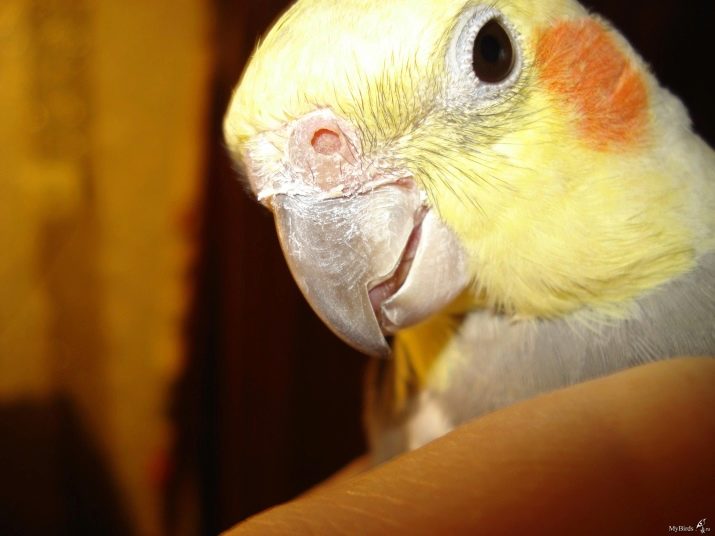
Paws
Young corals have fair skin on their paws, with a pinkish tint. They are also covered with a very thin layer of barely visible scales. At the ends of the fingers are small and neat claws of a light shade. With age, the scales become coarser. Wrinkles appear on the paws. The color darkens, acquiring a brownish tint. Claws lengthen and gradually darken, and then become almost black.
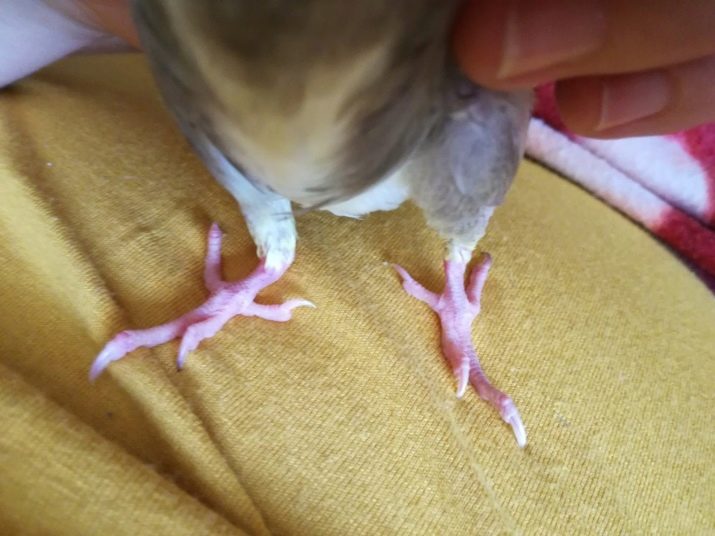
Plumage
Chicks have a not very attractive appearance. Recently born crumbs have rare unopened feathers and a small fluff. On the tail there are small, short feathers, but in adults, on the contrary, long, graceful feathers. The color of feathers before the first molt (3-4 months) is not very bright. And only by the year the molting ends and the feathers are replaced by others, the parrots become adult in color. And individuals that have a mutational color, find their final color only by 2 years.
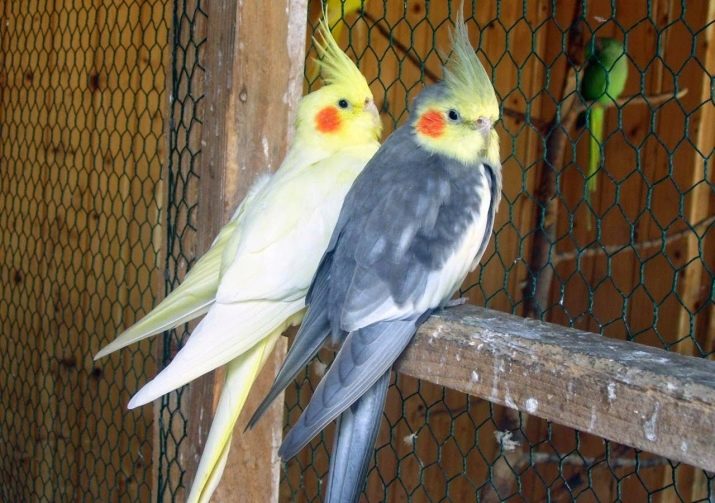
During the molting period, birds often try to speed up this process by plucking feathers on their own. But here, too, it is worth being very careful, as sick birds also do this.
Pay attention to all the components of the state. If the bird does not have a very good appearance, then you should give your preference to another. Better yet, go to another pet store, as almost all bird diseases are highly contagious and quickly transmitted to other birds.
Behavior
Very young corals are poorly able to fly, and in this regard, they are mainly located at the bottom of the cage. Also, they still do poorly with cleaning feathers, because of which they can be stained with waste products. A young individual can also be determined by the fact that they do not hold their balance well, and as a result of this, they may not be very confident on their paws. This can be seen by careful movements.
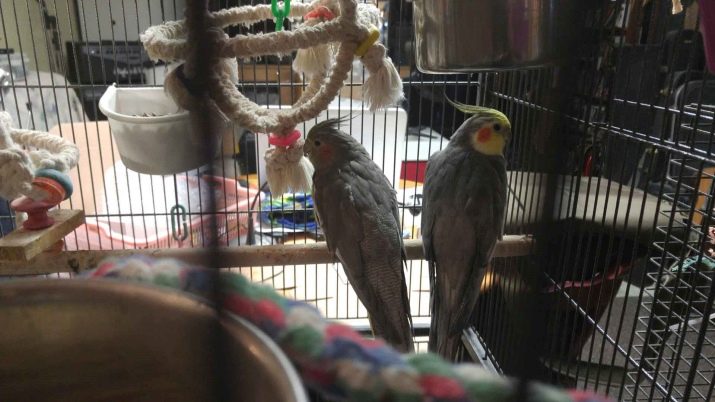
Proper care and maintenance
The cage is one of the main points, it must be correctly selected so that the bird feels comfortable there.
- Cell sizes should be large enough. But there are minimum sizes that you can focus on: 45x45x60 cm. The shape should be square or rectangular, the main thing is that there are corners, and the bird could hide or rest there.
- The distance between the rods should be no more than 2 cm. Also, they should go horizontally, so that it would be convenient for the budgie to grab hold of their legs and beak.
- For your convenience, it would be better to have a pair of doors in the cage. This will greatly facilitate cleaning.
- The grill on the pallet should not be installed; the bird may get hurt. To maintain cleanliness, litter will be needed. For it is better to use sand, paper towels and a special filler. It is strictly forbidden to use sawdust and plain paper.
- Plastic sticks should be changed to wooden, with a diameter of 2.5-3 cm. For this, birch, linden and maple are well suited.
- In the cage it will be necessary to install 2 feeders for dry and wet food, as well as a drinker.
- It’s worth adding toys so that the bird can have fun. Do not forget about accessories that can be nibbled: chalk figures, twigs with fresh buds, special bird treats.
- It is better not to install a mirror, as many birds are afraid of their reflection. However, you can try to bring it to see the reaction of your corella.
- The location of the cell is also important. It must be installed near the wall, the place should be well lit, but direct sunlight should not fall.
- It is forbidden that in the room where the cell is located there are excess odors.
- To prevent the bird from feeling lonely, it is worth putting the cage where you are most often located.
- It is strictly forbidden to install the cage on the floor or hang it on the ceiling. It is worth putting it on a table or dresser so that it is approximately at the level of your eyes.
- If you plan to release a budgie from a cage, you will need to install a small game complex for him in the room.
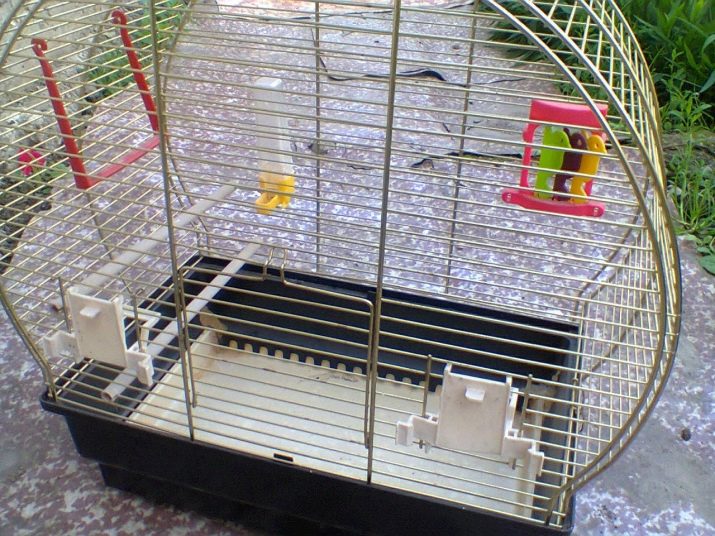
Before buying a parrot, you need to think through all the details so that then there are no problems. And, of course, all the "dowry" should be purchased in advance.
To make your pet happy with its liveliness and cheerful character from year to year, do not be too lazy to get acquainted with all the nuances of its choice and content before purchasing it. Remember that you are not acquiring a toy, but a friend - and then he will repay you with sincere and pure love.
See below for how to determine the age of the Corella parrot.
